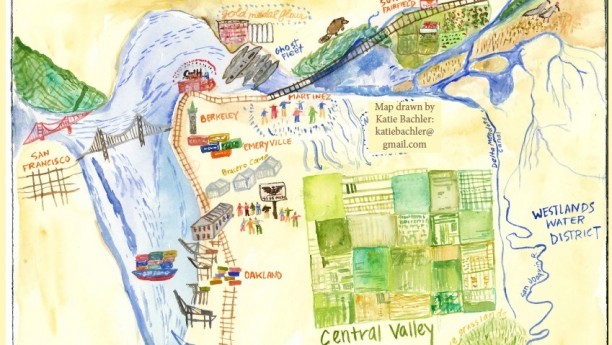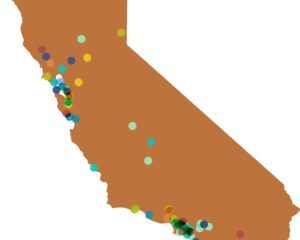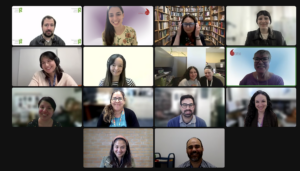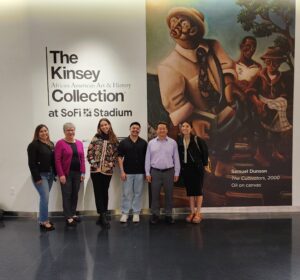“…humanities projects encourage us to see the world in all of its rich complexity…”
– Ildi Carisle-Cummins
Docks to Delta Project was launched at the end of September 2015 with a live story-based performance during the two-hour train ride to Sacramento, and discussion sessions on the return trip to Oakland. These stories will be made available as podcasts that can be accessed via smart phone app or computer by travelers and others interested in the past, present, and future of California and regional history.
CH:Tell us a little about yourself and the organization.
ICC: I direct the Cal Ag Roots Project at the California Institute for Rural Studies. Cal Ag Roots puts historical roots under current California food and farming change movements by telling the story of California agricultural development in innovative, useful and relevant ways. There is deep knowledge about the structures, driving forces and key moments that have shaped California’s food system among recognized “experts” and those who have participated in the creation of CA farming, but this knowledge doesn’t always inform food movement work. Cal Ag Roots shares stories from this wide range of people, opening new lines of communication among them.
Cal Ag Roots launched this fall with a live storytelling event and podcast series, supported by Cal Humanities, called Docks to Delta. Docks to Delta Live took place in September on the Capitol Corridor train (which runs from Oakland to Sacramento) where 90 guests heard 3 stories about California farming history that were connected to the landscape we were traveling through. This fall, we’re working on recording those stories as podcasts that can be listened to by any of the 2 million Capitol Corridor train riders– or anyone else with access to the internet. Stay tuned for those which will be finished this winter. You’ll be able to find them on our Cal Ag Roots Story Hub.
Prior to launching the Cal Ag Roots Project, I worked as a researcher at UC Davis, studying community food systems and earning an M.S. in Community Development. I have spent my entire career in various corners of the California food movement. I was Associate Director of the youth empowerment and food justice program, “Food, What?!” and ran the Farm to School Program for Community Alliance with Family Farmers (CAFF). I worked with food banks, health departments, school garden organizations and school districts– basically with anyone interested in shifting California farming towards sustainability. Throughout my work in the community food systems movement, my approach has always emphasized partnership, bridge-building and justice. 
CH: What inspired you to do this project?
ICC: Cal Ag Roots grew out my varied experiences in the California food movement. I found that as much energy, enthusiasm and idealism as the people in the food movement tend to have, our work isn’t always grounded in history which leaves us to repeat mistakes, unintentionally replicate injustices and, at times, spend energy fighting the wrong battles. Cal Ag Roots is designed to help people understand why California farming works the way that it does so that they can be more effective in shifting it.
And, it’s important that the project is fun and engaging. Activists need to be inspired and fed, since there’s always so much risk of burnout, so we launched Cal Ag Roots with an event on a train. That seemed to work– we sparked rich dialogue about the Docks to Delta stories and people told us that they really enjoyed themselves.
CH: Why did you choose this method of storytelling?
ICC: I wanted to tell stories that would expand our thinking about California farming, so uncovering stories that hadn’t yet been told made sense as a process. I chose to focus on oral stories and audio production because I wanted the stories to be as accessible as possible to an increasingly busy and inundated audience. While people might not have time or attention spans for reading long articles or watching videos, many people now listen to the radio or podcasts in the car or on their phones (or in the case of our Docks to Delta podcast, while commuting on the train).
Personally, I’ve been really moved by podcasts that I’ve listened to, particularly as I was traveling through a landscape that was connected to the stories I was hearing. There’s something so intimate and powerful about having a story come through headphones into your ears. You don’t have to worry about reacting to the storyteller, being a good audience member, or staying focused on words on a page. The story’s delivered right to you, which I think gives you plenty of space for listening deeply and absorbing the story into your life.
That said, the Cal Ag Roots Project is focusing storytelling events and audio pieces, but we are also be putting up short articles, photos, maps and other resources related to the stories on our Story Hub and can learn more about the Cal Ag Roots project on the CIRS website.
CH: What challenges have you encountered? What stands out as special accomplishments?
 ICC: I’ve said that putting together the Docks to Delta Live event was kind of like building a big Rube Goldberg machine. (You know, the kind of contraption where you line up the tracks, set the golf ball rolling and that drops into the cup, spilling the vinegar onto the baking soda which inflate the balloon, etc. until eventually an alarm is shut off by a fly swatter– or some other task is accomplished.) Putting together our live event with 3 storytellers, 2 narrators, a singer, 16 other voices on tap through an iPad soundboard and broadcasting a program to 90 people wearing audio headgear– all while moving along the tracks on a train traveling from the Bay Area to Sacramento– was a challenge. But somehow we pulled it off and people were very engaged. I think it was a unique experience, and from the feedback we’ve received, one that will really leave a lasting impression on attendees. In fact, it went so well that we’re starting to think about other train routes around the state where we could host similar events.
ICC: I’ve said that putting together the Docks to Delta Live event was kind of like building a big Rube Goldberg machine. (You know, the kind of contraption where you line up the tracks, set the golf ball rolling and that drops into the cup, spilling the vinegar onto the baking soda which inflate the balloon, etc. until eventually an alarm is shut off by a fly swatter– or some other task is accomplished.) Putting together our live event with 3 storytellers, 2 narrators, a singer, 16 other voices on tap through an iPad soundboard and broadcasting a program to 90 people wearing audio headgear– all while moving along the tracks on a train traveling from the Bay Area to Sacramento– was a challenge. But somehow we pulled it off and people were very engaged. I think it was a unique experience, and from the feedback we’ve received, one that will really leave a lasting impression on attendees. In fact, it went so well that we’re starting to think about other train routes around the state where we could host similar events.
I think the podcast has the potential to really stir up conversation about California agriculture’s past and future.
CH: What do you hope will result from the exhibit and public programs? For participants, community, and your organization?
ICC: I see Cal Ag Roots and Docks to Delta as storytelling projects that help to put current conversations about California farming in historical context, orienting people to how our food system developed. I think it would be hard to look at the landscape along the Capitol Corridor rail line in the same way after hearing our Docks to Delta stories. I also see this as an organizing project– encouraging dialogue between people who might never have realized they have common goals and sparking new thinking about where we’re headed in California farming.
CH: Why do you think the humanities are important to our lives?
ICC: I think humanities projects encourage us to see the world in all of its rich complexity. My favorite work in the humanities shakes us out of our everyday lives and patterns of thinking, surprising us with insights that help us understand the people– and places– around us in new ways.
Photos top to bottom:
PDF map of the Docks to Delta Route Map, California Humanities’ staff member holding her ticket, Project Director, Ildi Carlisle-Cummins on the left and Aubrey White, Audio Producer on the right.





